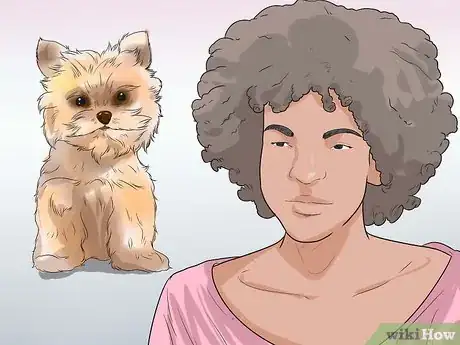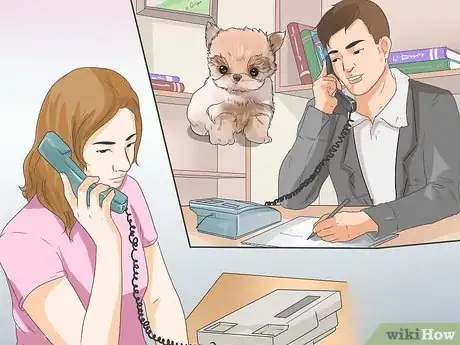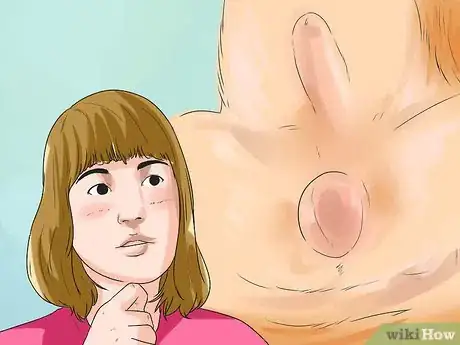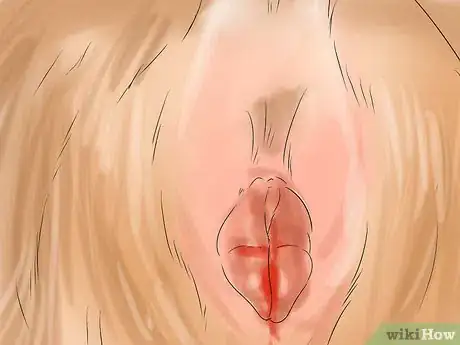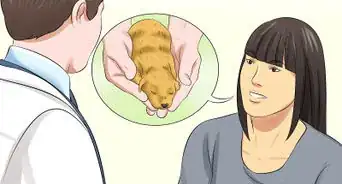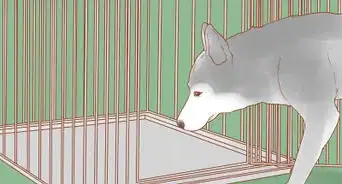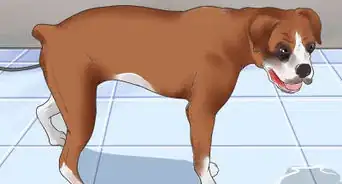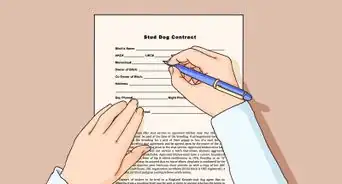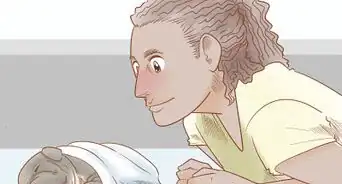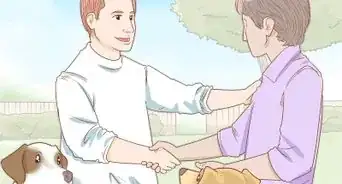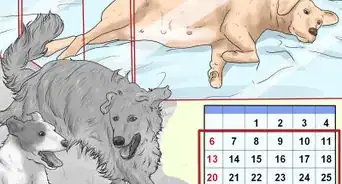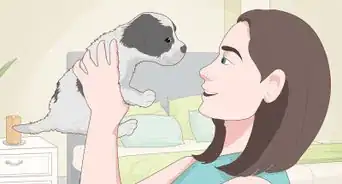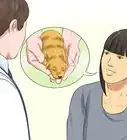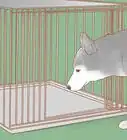This article was co-authored by Pippa Elliott, MRCVS. Dr. Elliott, BVMS, MRCVS is a veterinarian with over 30 years of experience in veterinary surgery and companion animal practice. She graduated from the University of Glasgow in 1987 with a degree in veterinary medicine and surgery. She has worked at the same animal clinic in her hometown for over 20 years.
There are 8 references cited in this article, which can be found at the bottom of the page.
wikiHow marks an article as reader-approved once it receives enough positive feedback. In this case, 94% of readers who voted found the article helpful, earning it our reader-approved status.
This article has been viewed 81,585 times.
If you plan to breed your Yorkshire terrier (Yorkie) there are some very important issues to consider long before you mate your dog. You need to evaluate the dog's suitability for breeding, its physical and breed characteristic traits, how the process of reproduction might effect the dog, and the potential pitfalls and complications of having a litter of pups. If you consider all of these issues before breeding your dog, and you still go through with it, your evaluation will prepare you better for the realities of the breeding process.
Steps
Deciding Whether to Breed Your Yorkie
-
1Determine if your Yorkie is old enough to breed. A female Yorkie should not be used for breeding until she is 2 years old.[1] A male Yorkie will generally have viable sperm when he is over a year old.
-
2Assess whether your dog has the right physical traits for breeding. Does your dog have desirable breed traits? Does it meet breed standard minimums? According to the American Kennel Club a Yorkie should exhibit these traits:[2]
- The Yorkie's body should be compact and well proportioned.
- In addition, a Yorkie's head should be “small and rather flat on top, the skull not too prominent or round, the muzzle not too long, with the bite neither undershot nor overshot and teeth sound. Either scissors bite or level bite is acceptable. The nose is black. Eyes are medium in size and not too prominent; dark in color and sparkling with a sharp, intelligent expression. Eye rims are dark. Ears are small, V-shaped, carried erect and set not too far apart.”[3]
-
3Assess whether your dog has the right temperament for breeding. It should appear confident but should be friendly towards people and not fearful. Fearfulness in dogs can be hereditary or a learned trait but you do not want to risk perpetuating a bad hereditary trait.[4]
-
4Determine whether you have the financial stability to breed your dog. A dog pregnancy could result in complications, which could cost you a lot of money. Possible complications to consider include an emergency C-section or serious medical conditions occurring in the mother. These can include hypocalcemia, metritis, or mastitis.
- Are you prepared to raise any unsold puppies? All the puppies in any given litter do not always sell, so you need to be aware that you may be taking on a lifelong financial responsibility for a new puppy.
-
5Be realistic about whether you have the time to devote to breeding your dog. Raising puppies is a full-time job. You will need time for daily handling and socializing the puppies, as only puppies that are socialized to humans make good pets.
- The time spent playing and bonding with the puppies is in addition to the time it takes to care for them. Feeding and cleaning after puppies is no small job.
-
6Contact a breeder to adopt a Yorkie that you can then breed. If you are looking to adopt a Yorkie you can breed, you should get the name of a well-respected breeder that has a good track record with successful offspring. Good breeders will encourage you to visit them, have good looking and social dogs and puppies, give the dogs plenty of room to roam, will only breed one type of dog, and will interview you about how you will raise the dog they bred.[5] [6]
- Contact local Yorkie clubs for a list of local breeders that do not run puppy mills.[7]
- If there are no well-established breeders in your area, you may need to travel to get a dog that has all the positive breeding traits you want.
- When you are interacting with a well-regarded breeder, pay attention to how the person conducts business and how he or she interacts with the dogs. You can learn a lot just from watching how a professional conducts business.
- Make sure to assess all aspects of the breeding process. Use a checklist to make sure you have covered your bases, like the one provided by the Humane Society.[8]
Breeding Yorkies
-
1Understand the reproductive system of the male Yorkie. The external parts of the male Yorkie's reproductive system are the penis and the scrotum. The scrotum is a pouch that holds the dog's testicles. The sperm, which fertilize the female's egg, are produced in the testes.[9]
- Male dogs should ideally have two testes, which move from inside the body down into the scrotum during puberty. A mature male's testes are located outside the abdomen because the internal body temperature is too warm for sperm to grow normally. Because of this, dogs with undescended testes (testicles that do not move down into the scrotum) do not make good candidates to breed, as the problem can be inherited. They should be neutered because undescended testicles can cause health problems later.
-
2Understand the reproductive system of the female Yorkie. Most of the female Yorkie's reproductive system is located inside her body. The only visible part is the vulva. Inside, the ovaries produce eggs and the female sex hormones estrogen and progesterone.[10]
- After eggs are fertilized by sperm, they attach to the uterine lining and grow into puppies.
-
3Get a physical veterinary examination of both dogs. About one month before you breed your Yorkie it should be examined by a veterinarian. The vet should make sure the female is healthy enough to carry a pregnancy to term and that the male is free of diseases and physical problems.
-
4Watch for signs that the female is physically ready to mate. Track the female's reproductive cycle so that you know when she will go into heat next. In general, a female dog generally goes into heat twice a year.
- The heat cycle starts with a preparatory stage, proestrus, when the vulva swells and a light bloody discharge occurs for 7-9 days. After this stage the bleeding slows down and the dog becomes receptive to breeding. This stage is called estrus or standing heat and is the most fertile time for breeding.
- Your veterinarian can determine if your dog is in heat by swabbing the inside of her vagina with a cotton swab. By examining the cells on the swab under a microscope the vet can determine if it is the right time for breeding.
-
5Place the male and female together. When the female is physically ready to breed, she will bow to him and back into him. The male will usually reciprocate this interest and mount her for breeding. This process usually occurs naturally, without any outside intervention needed.[11]
-
6Advertise the puppies before they are born. You want to have people lined up who are going to adopt the puppies when they are born. The last thing you want is to be stuck with too many dogs.
- Advertise your puppies on local list-servs for Yorkie owners or with your local chapter of national dog organizations.
- Make a list of potential buyers. Since you won't know exactly how many puppies your dog will have, you need to basically make a waiting list. Let potential buyers know where they fall on the list, so that they know there is a chance they will not get a puppy in this litter.
References
- ↑ Your Yorkshire Terrier Puppy Month By Month. Debra Eldredge DVM and Liz Palika. Penguin., 2012
- ↑ http://www.akc.org/dog-breeds/yorkshire-terrier/
- ↑ http://www.akc.org/dog-breeds/yorkshire-terrier/
- ↑ https://www.psychologytoday.com/blog/canine-corner/201111/why-are-some-dogs-so-anxious-and-fearful
- ↑ http://www.humanesociety.org/issues/puppy_mills/tips/finding_responsible_dog_breeder.html
- ↑ http://www.humanesociety.org/assets/pdfs/pets/puppy_mills/find_responsible_dog_breeder.pdf
- ↑ http://www.akc.org/dog-breeds/yorkshire-terrier/
- ↑ http://www.humanesociety.org/assets/pdfs/pets/puppy_mills/find_responsible_dog_breeder.pdf
- ↑ www.merckvetmanual.com/pethealth/dog_disorders_and_diseases/reproductive_disorders_of_dogs/the_gonads_and_genital_tract_of_dogs.html
- ↑ www.merckvetmanual.com/pethealth/dog_disorders_and_diseases/reproductive_disorders_of_dogs/the_gonads_and_genital_tract_of_dogs.html
- ↑ http://www.vcahospitals.com/main/pet-health-information/article/animal-health/breeding-for-pet-owners-estrus-and-mating-in-dogs/484
About This Article
To breed yorkies, you should have your dog examined by a vet about one month ahead of time to make sure it’s healthy. If you have a female yorkie, you can track her reproductive cycle so you know when she will next be in heat. Watch out for signs like her vulva swelling and a light, bloody discharge to tell you when she’s going into heat. You should breed her 7-9 days later when her bleeding slows down, since this is the most fertile time in her cycle. Regardless of gender, you should try to breed your yorkie when it appears friendly and not fearful of people, so its fear isn't inherited by the litter. When you take it to mate, you usually won’t need to do anything, as the dogs will breed naturally. For more tips from our Veterinary co-author, including how to decide whether breeding yorkies is right for you, read on!
